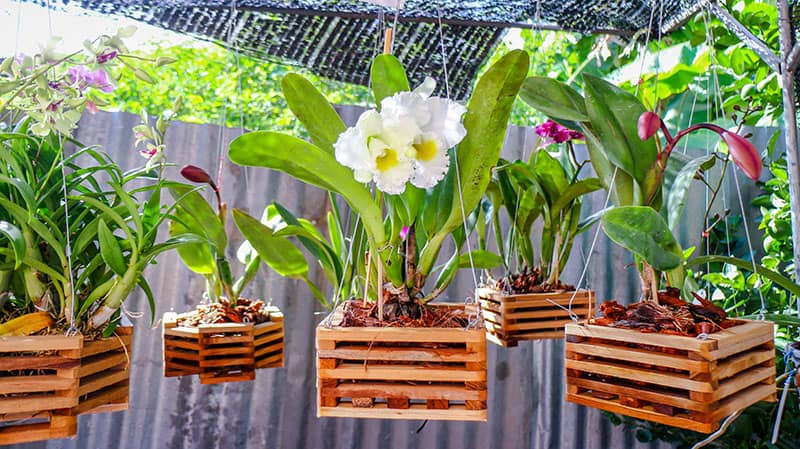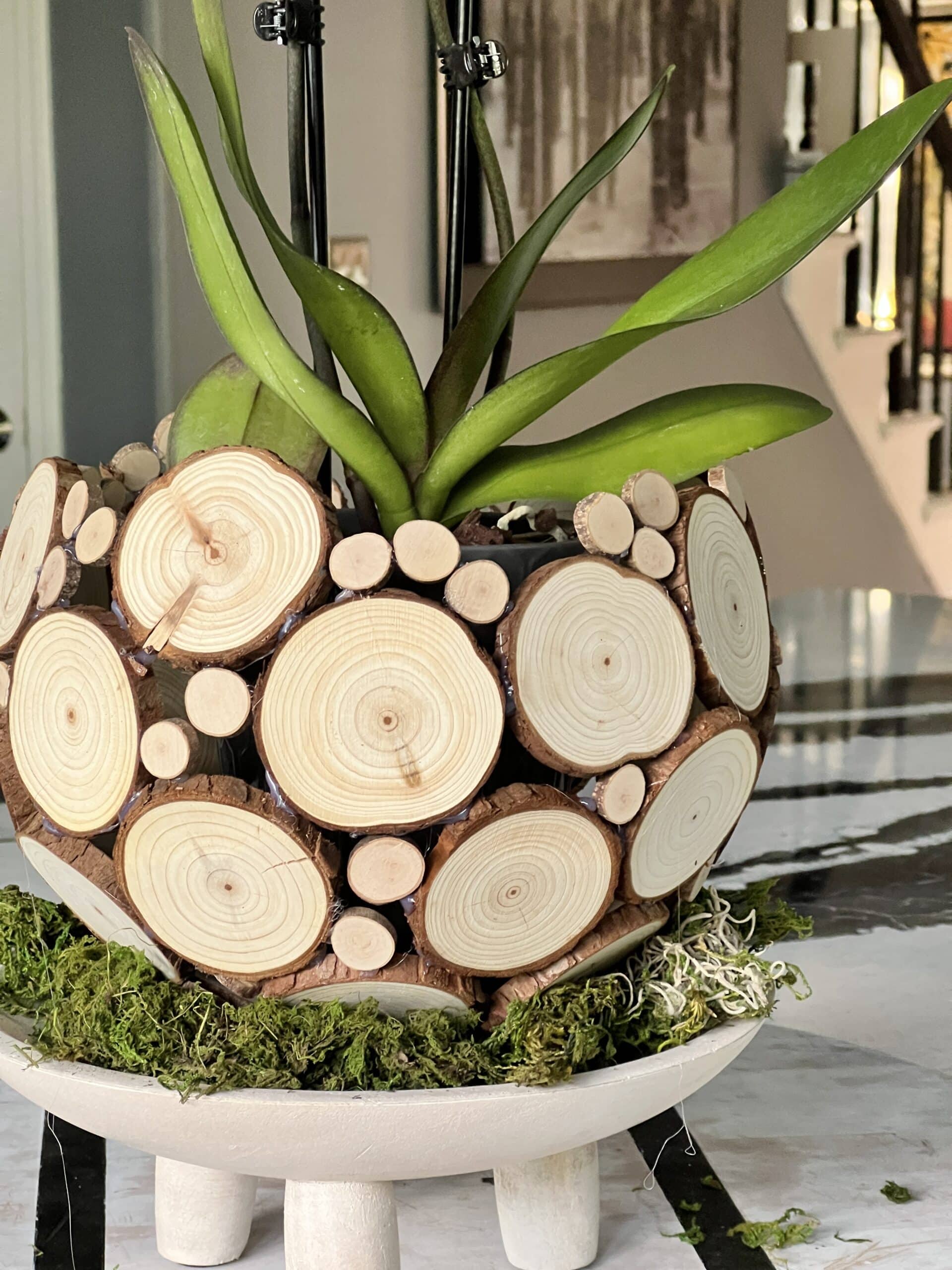Orchids are stunningly beautiful, but to show them off to their full potential, they deserve the right decorative pots. As an orchid enthusiast, I’ve learned that the right pot can make all the difference, not only in aesthetics but in the health and growth of these delicate plants. This article guides you through everything you need to know about decorative orchid pots, from types and materials to tips for choosing the perfect one.
Understanding Decorative Orchid Pots
Orchid pots are specially designed to accommodate the unique growing needs of orchids. Unlike regular pots, decorative orchid pots come in various shapes, sizes, and materials, ensuring not only that your orchids thrive but also that they look stunning in your home.
Why Choose Decorative Orchid Pots?
- Enhances the overall aesthetic of your living space.
- Improves drainage and air circulation for better plant health.
- Can be customized to match your home décor style.
Types of Decorative Orchid Pots
When it comes to decorative orchid pots, you’ll find several types available. Each type has its own pros and cons, and understanding these can help you make the right choice for your plants.
1. Plastic Orchid Pots
Plastic pots are lightweight, affordable, and come in various colors and designs. They often have drainage holes at the bottom, which is vital for orchid health.
Pros:
- Lightweight and easy to handle.
- Affordable and widely available.
- Good drainage options.
Cons:
- Less aesthetically pleasing than other materials.
- Can retain heat, which may be harmful in hot climates.
2. Terra Cotta Orchid Pots
Terra cotta pots are made from clay and are highly porous, allowing for great air circulation and moisture control. They are a favorite among many orchid growers.
Pros:
- Excellent drainage and air flow.
- Natural, rustic look.
Cons:
- Heavy and can break easily.
- Can dry out quickly, requiring more frequent watering.

3. Decorative Ceramic Orchid Pots
Ceramic pots come in a wide variety of designs, glazes, and colors, making them highly decorative. They can also be found with or without drainage holes.
Pros:
- Available in many beautiful designs.
- Good for maintaining humidity when sealed properly.
Cons:
- Heavy and can be difficult to move.
- Can crack if not handled properly.
4. Hanging Orchid Pots
If you are short on space, hanging pots can be a creative solution. They allow you to display your orchids in vertical space.
Pros:
- Maximizes space usage.
- Creates a unique visual display.
Cons:
- May require additional support or hooks.
- Water drainage can be messy if not properly designed.

Choosing the Right Decorative Orchid Pot
Choosing the right decorative orchid pot is crucial for both the health of your plant and the look of your space. Here are some tips to consider:
Consider Orchid Type
Different types of orchids have varying needs. For instance, Phalaenopsis orchids thrive in a pot with excellent drainage, while Cattleyas can tolerate a bit more moisture.
Assess Size and Depth
The pot’s size should match the size of your orchid. A too-small pot can restrict growth, while a too-large pot can lead to overwatering issues.

Drainage is Key
Ensure your decorative pot has drainage holes. This feature is crucial as orchids do not like sitting in water.
Style and Aesthetics
Choose a pot that complements your home decor. From rustic to modern styles, there’s a decorative orchid pot that will fit your taste.

Comparison Table of Decorative Orchid Pots
| Type | Pros | Cons | Best For |
|---|---|---|---|
| Plastic | Lightweight, affordable, good drainage | Less aesthetic, heat retention | Everyday use |
| Terra Cotta | Excellent drainage, rustic look | Heavy, dries out quickly | Experienced growers |
| Ceramic | Beautiful designs, humidity control | Heavy, prone to cracking | Decorative display |
| Hanging | Maximizes space, unique display | Requires support, messy drainage | Small spaces, creative displays |
Maintaining Your Decorative Orchid Pots
Once you’ve chosen the perfect decorative pot for your orchids, maintenance becomes essential to keep them healthy and thriving. Here are some tips based on my personal experiences:

Regularly Check Moisture Levels
Orchids prefer a well-draining environment, so check the moisture level in the potting medium regularly. Using a moisture meter can help significantly.
Clean Your Pots
Over time, dirt and algae can accumulate on decorative pots. Regular cleaning not only keeps your pots looking great but also prevents pests and diseases.

Repot When Necessary
Orchids often outgrow their pots. Signs that it’s time to repot include roots growing out of the pot or medium breaking down. Always repot during the growing season for best results.
Personal Experiences with Decorative Orchid Pots
Having experimented with numerous decorative orchid pots, I’ve had some memorable experiences. One of my favorites was using a vintage ceramic pot I found at a flea market. Not only did it provide a beautiful home for my Phalaenopsis orchid, but it also sparked conversations with visitors about the pot’s history!
Another time, I chose a hanging pot for my mini orchids, which transformed a boring corner of my room into a vibrant green oasis. The pots added dimension and drew attention to the space, much to my delight. It’s truly amazing how the right pot can enhance not just the beauty of your orchids, but your living space as well.

FAQs About Decorative Orchid Pots
What is the best material for orchid pots?
The best material depends on your individual needs. Terra cotta and ceramic are excellent for air circulation, while plastic pots are more lightweight and cost-effective.
Do orchids need special pots?
Yes, orchids typically require pots with good drainage to prevent root rot. Decorative pots can be adapted for this purpose as long as they allow for proper air flow and drainage.
How often should I repot my orchids?
Most orchids benefit from being repotted every 1-2 years, depending on their growth rate and the potting medium’s condition.
Can I use normal flower pots for orchids?
While regular flower pots can be used, it’s important that they have adequate drainage and aeration. Some regular pots may not allow for sufficient air flow needed for healthy orchid roots.
Conclusion
Decorative orchid pots are not just functional; they also enhance the beauty of your orchids and your home. By choosing the right type, material, and design, you can create a stunning display that highlights your orchid’s natural beauty. From my own experience, investing time in selecting the right decorative pot pays off in plant health and aesthetic appeal. Happy potting!